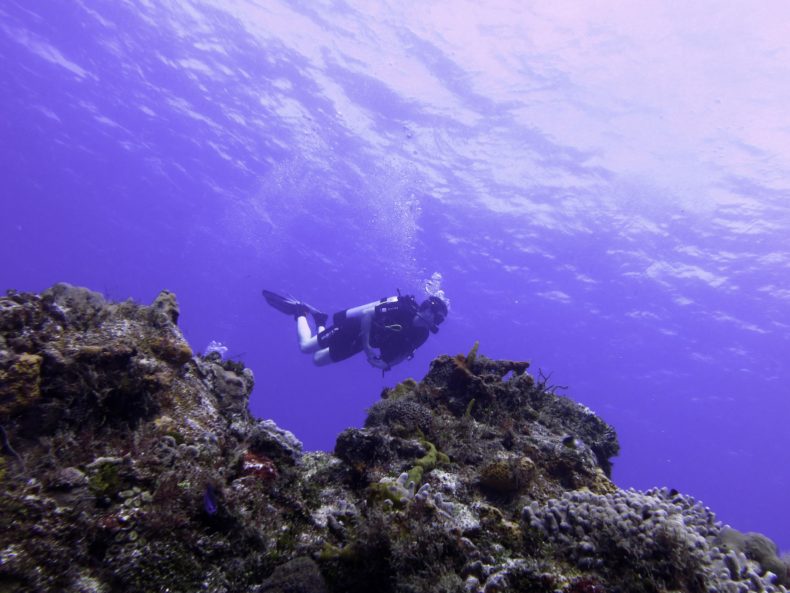 Last month, while on assignment in Cozumel for a story on sponges, I went diving on a beautiful reef. It was stunning – a world of color, dreamlike shapes, and life everywhere I looked. Normally, I would have just swam about, marveled at the pretty nature, and come back to my hotel with a fat grin on my face.
Last month, while on assignment in Cozumel for a story on sponges, I went diving on a beautiful reef. It was stunning – a world of color, dreamlike shapes, and life everywhere I looked. Normally, I would have just swam about, marveled at the pretty nature, and come back to my hotel with a fat grin on my face.
But I just couldn’t stop fretting over all the sponges. You see, my story was on a theory among sponge experts that sponges are secretly, quietly taking over the world. It is … wait for it … The Rise of the Planet of the Sponge. Scary, right? Except just on coral reefs, not the world. And only in the Caribbean Sea. So, I guess it’s The Rise of the Caribbean Reef of the Sponge. Wow, that really doesn’t work as well.
Anyway, the theory goes that huge coral and urchin die-offs have led to a lot of spare real estate and algae on Caribbean reefs. The sponges have stepped in, sucked up the excess sugar pumped out by the algae and filled the now-empty reefs.
And diving in Cozumel, I noticed for the first time just how much of the color on a reef is actually sponge. We all know the big barrel sponges – those giant cannon-looking things hanging off the reef – but I’d never really noticed the encrusting sponges before. These are the colorful flat sponges that sort of drizzle around the reef like splotches on a Jackson Pollack.
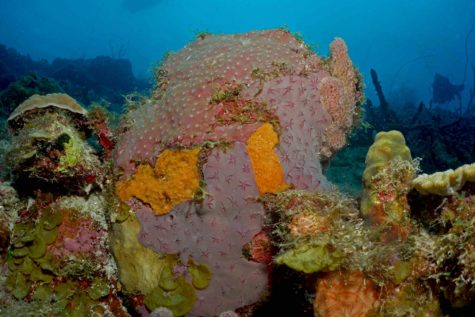 It turns out that very little of the life I was looking at on the coral reef was actually coral. When I asked the folks on my boat – some of whom had been diving Cozumel for decades – none of them noticed the dominance of sponge over the coral. Likewise, the dive guides hadn’t noticed it either. How could they not see it? It was so obvious!
It turns out that very little of the life I was looking at on the coral reef was actually coral. When I asked the folks on my boat – some of whom had been diving Cozumel for decades – none of them noticed the dominance of sponge over the coral. Likewise, the dive guides hadn’t noticed it either. How could they not see it? It was so obvious!
So I went around the island, quizzing the most experienced dive masters about the changes in sponge concentration and all I got were blank stares. Veteran dive instructor Raul Fernandez put it best with an insight about diving with tourists.
“They want a beautiful garden. They want to see colorful coral and the life that comes with it,” he says. “There’s not much difference [between coral and sponge] for them. It’s just vegetation. Underwater vegetation.”
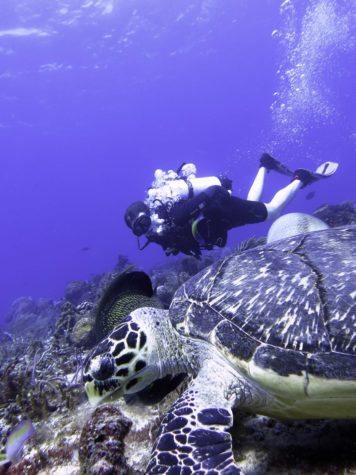
This is not just limited to tourists, it’s also replete in marine biology. Joseph Pawlik, the scientist who turned me onto the story, says he goes to coral conferences only to find that none of the coral people bother to look at the sponges. For decades, experts have been trying to understand why the Caribbean corals have struggled compared to the Indio-Pacific ones. The answer – namely greedy sponges – was right under their noses the whole time.
How could world-renowned experts not notice the rise of the frigging planet of the sponge? It’s right there!
The answer is, because it might not even be happening. As I dug further into the story, I discovered a lively debate about the whole conquering sponge theory within the sponge scientist community. It turns out many leading researchers are ambivalent about the idea and at least one is dead set against it.
Again, it all depends where you look. Pawlik may be right about the prevalence of sponges or he might be biased by the Florida reefs in his back yard. Other scientists looking at other regions don’t see the uptick in sponges that he does. (In fairness to Pawlik, though he works a lot in Florida, he has an impressive list of research sites throughout the Caribbean. Check them out on his engrossing YouTube channel.)
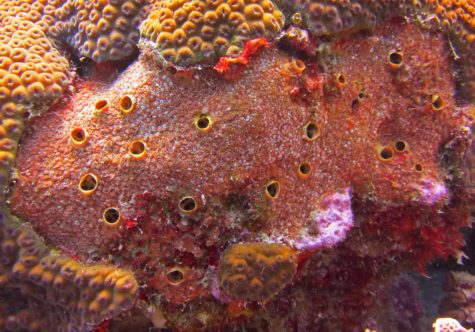
Another expert, Michael Lesser, has looked at reefs and doesn’t see any of the algae-related extra sugars around reefs in the Pacific or the Caribbean that would be fueling the sponge growth. Then again, he may not be looking close enough to the algae themselves. And another expert points out that almost all studies overlook the burrowing sponges, which live inside the reef itself and can even hollow it out.
And if you travel to certain reefs in the South Pacific, there’s no problem with coral reefs at all. Yet every marine biologist I spoke to agrees on one point. The reefs of tomorrow will look nothing like those of yesterday.
“There are going to be coral reefs but they are going to be different kind of coral reefs. There are not going to be coral-dominated reefs. They are going to be sponge-dominated, or algal-dominated or soft coral-dominated,” Lesser says. “And how do those reefs function?”
We science journalists always roll our eyes when we hear the phrase “more research is needed” because it’s always coming from a scientists who would very much like money to do said research. But sometimes more research really is needed. Ambitious, sprawling, comprehensive studies that nibble away at these questions. And keep at it.
Because it’s really hard to know if what we’re seeing is just a product of where we’re looking. And with something as vast as the ocean, it’s hard to overstate just how little we know. So little that we can’t tell how many of its most iconic fish are left in it. So little that we don’t even know what lives in much of it. So little that we can’t say for certain if sponges are disappearing or taking over.
This brings me back to where I started and the real stakes of where we choose to choose to look for evidence. It’s more than just a matter of what the sponges are up to or how much sugar is in the water. Once upon a time, the reefs of western Cozumel were some of the most stunning in the hemisphere. Today, by any reasonable measure, they are a shadow of their former selves.
Every day of the year the harbor is choked with giant cruise ships, some of which can’t even find space to dock (so naturally the government has carved up a massive reef to make room for more docks). One guide* told me his former employer saw some 60,000 divers per year – 360 in a single day. Some of them go to the same reefs I saw and if so, I guarantee they went home happy without a second thought.
The reefs are healthy. I’ve been there. I’ve seen it.
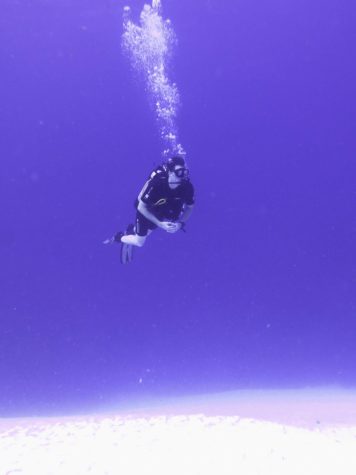
Some days I’d like to think that one day Cozumel and all the coral reefs of the world will find their way back to the lush biodiversity I see in old Jaques Cousteau films. That the bleaching will end and the pollution will abate along with climate change. That we will think and regulate our way out of these seemingly insurmountable problems. And that my grandchildren will laugh at posts like this.
But most days I live with a different picture – a sick sort of vision in my mind. Thirty divers swimming behind a single damselfish, all snapping selfies and streaming video, while backdropped by the wasteland that has become the Earth’s oceans.
Then, when they get to the surface they look at each other with wide grins saying, “Wasn’t that amazing? What a beautiful fish! Isn’t nature just astounding?”
Photos of me diving in Cozumel by Aquarella Images. Sponge photos by Jasper M. de Goeij and Ben Mueller.
* Sergio Suarez runs a great ecotourism operation in Cozumel. If you are interested in getting a more environmentally-focused dive, check him out.
I suspect that compared to how those reefs looked a hundred years ago your ‘sick sort of vision’ of the future is already here.